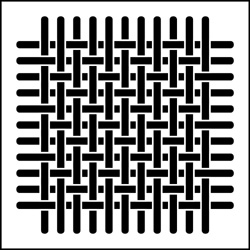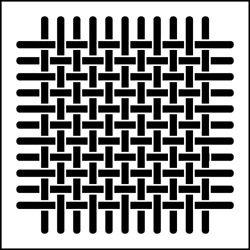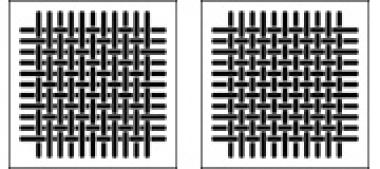What is meant by “bed ticking“ and “cambric“?
Down and feathers must be filled into a tightly woven, but at the same time breathable shell. The shell must safely prevent the filling components (for instance parts of down and feathers) from penetrating the fabric. Furthermore, it shall support the properties of the filling materials such as regulation of humidity and breathability.
On the other hand, no parts from outside (e. g. skin scales or house dust mites) should get into the filling. This aspect is crucial, since a top-quality fabric is the basis ensuring that the bedding article is suitable for house dust mite allergy sufferers.
To ensure ideal sleeping comfort the shells must be breathable so that the humidity absorbed by the filling can be transmitted outwards. Cotton is the most suitable raw material forming the basis for shells.
Depending on the range of quality medium or long-stapled grades of maco cotton are employed.
Maco is an extra fine, silky sort of cotton (for instance Egyptian maco cotton) which is spun from an extra long staple and more valuable than other grades of cotton. Fine threads are spun from Maco cotton which are suited for the production of most delicate tickings and cambric fabrics. A distinction is made between short-stapled (ca. 22 mm), medium-stapled (22-29 mm) and long-stapled (30-35 mm) cotton. The long-stapled sorts of cotton offer top quality fabrics.
Down-proof fabrics are characterised by their special delicacy, lightness and drape-ability.
A distinction is made between
 Ticking (also called twill): Fabric mainly used for pillows. It is spun in twill weave.
Ticking (also called twill): Fabric mainly used for pillows. It is spun in twill weave.
Twill weave means that two thirds of the softer and more voluminous weft yarn are situated on the left side which later faces the down and feathers.
When using the bedding article the soft weft yarn at the inner surface ensures a fine felting of the cloth which is even intensified by small parts of the feather filling and thus enhances the density of the fabric.
 Cambric (also called Percale): Fabric mainly used for quilts. Cambric is woven in plain weave.
Cambric (also called Percale): Fabric mainly used for quilts. Cambric is woven in plain weave.
Plain weave is the simplest, the oldest and at the same time the most tightly woven fabric.
In this mode of weaving, each warp thread and weft thread are crossed over. .
The yarn count is crucially important with down-proof fabrics. The figure indicating the fineness is called yarn count (Nm). The higher the yarn count, the more delicate and lighter is the fabric. The application of very fine yarns allows to keep the fabric pores as small as possible to prevent down particles from penetrating the shell fabric.
The yarn count of high-quality fine fabrics ranges between 70 to 100 Nm.
The yarn notation stands for the proportion between the barrel length and the weight of the material (yarn thickness).
Example: Yarn notation Nm 50 signifies that one kilogramme of this yarn has a barrel length of 50 000 metres. The finest yarn notation used for cambric fabrics is Nm 135, i. e. 1 kilogramme of such yarn has a barrel length of 135 000 metres.
Further information at :
















